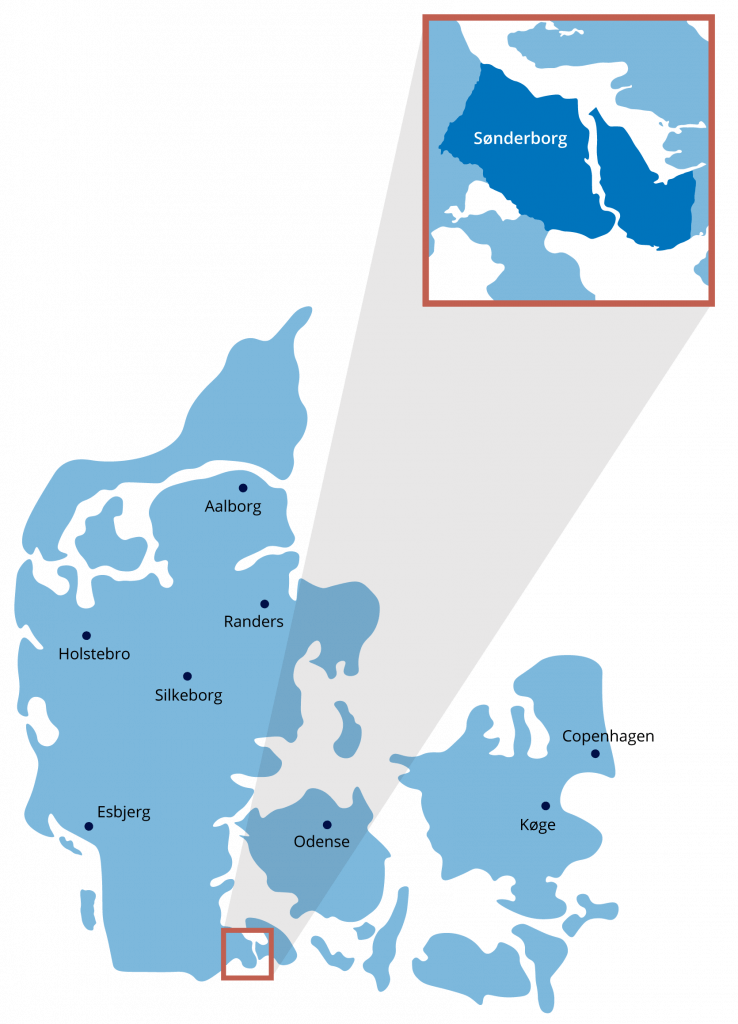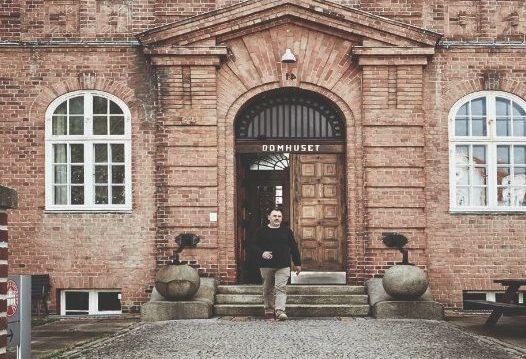Background
In 2007 the town of Sønderborg set an ambitious goal: to become 100% carbon neutral by 2029. 43% of Sønderborg’s carbon reduction is to come from improving energy efficiency, and the remaining 57% from renewable energy sources and waste heat based on the area’s own resources.
To date, Sønderborg has achieved a 52% carbon reduction.
The key was a step-by-step implementation process:
Step 1:
Energy Savings
- Educating and changing consumer habits, to promote energy conscious behaviour
- Energy efficient renovation of existing buildings i.e. heat recovery
- Future-proofing of new buildings (all public buildings are also expected to be built with a better energy efficiency standard than required by the current Danish building code)
Step 2:
Energy Efficiency
- Monitoring and targeting
- Improved control i.e. hydronic balancing
- Lowering Heat Network (4GDH) system flow and return temperatures (60/30˚C)
Step 3:
Further expanding heat networks and de-carbonising the energy supply
- Sector Coupling
- Introducing renewable technologies and waste heat from local industry

Sønderborg State School
In 2011 Sønderborg State School had moved into Sønderborg’s old Court House, built in 1913. Despite an extensive energy efficient renovation of the building, the school’s technical manager Morten, who was monitoring the heating system, was faced with poor classroom comfort and high operational costs.
Low return temperatures
To optimise the efficiency of the local district heating network, low return temperatures are required. Indeed, the town’s district heating network penalised the school with added payments for their high return temperatures, resulting in even higher energy bills.
Poor hydronic balancing
The challenge for Kim Henriksen from Kliplev HVAC as he commented was “that it was impossible to make sense of the system, and no one knew where best to put the balancing valves it required”.
The most cost-effective and simplest solution was to section the school into zones using Differential Pressure Control Valves (DPCVs) and introducing localised differential pressure control within the TRVs themselves.
Newly developed to improve the efficiency of existing buildings, Pressure Independent Thermostatic Radiator Valves (PI-TRVs) were installed. They ensure an even distribution of flow to all radiators through dynamic balancing.
Better classroom comfort
Coupled with the PI-TRVs were fast-acting gas-charged thermostatic sensor heads. An ideal choice for a school, these limit the effects of sudden internal heat gains i.e., when an empty classroom is suddenly filled with pupils. It’s been 10 years since the PI-TRVs were installed and current technical manager Jesper, could confirm that the system consistently achieves low return temperatures (≈32-33˚C).
A lesson for UK schools
Over 60% of the UK school estate was built before 1976, and the majority of these are now in need of urgent replacement and major refurbishment. The National Audit Office has estimated it would cost £6.7bn to bring existing school buildings up to a satisfactory standard, with a further £7.1bn needed to improve school buildings to a good condition.
Heat network ready
For schools to one day connect to 4G Heat Networks or even introduce renewable technologies which both demand lower system flow and return temperatures, will require better efficiency through an improved hydronic balancing of the space heating.
CP1 (2020) Best Practice PITRV
Designed for Heat Networks

Find out more – www.sav-systems.com/pitrv
Disclaimer: SAV can accept no responsibility for possible errors in catalogues, brochures, and other printed materials. Source(s) of information: Historical school building gains comfort and control of its heating system, www.stateofgreen.com/en/partners/projectzero, www.projectzero.dk, The National Audit Office – Department for Education’s property survey

